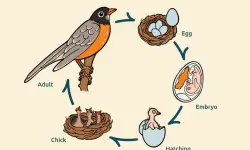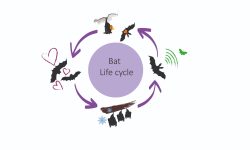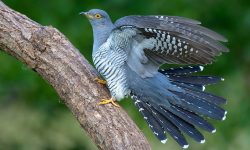Ostriches are the largest and heaviest birds in the world, famous for their flightless speed and powerful legs. But while many people are familiar with the African ostrich seen in zoos and documentaries, fewer know that the ostrich family tree is far more extensive. Over millions of years, ostriches have evolved into numerous species, many of which are now extinct. This article explores all 10 known species of ostriches – including both extinct and living – providing a comprehensive look at their characteristics, time periods, and fascinating legacies.

Living Species
1. Common Ostrich (Struthio camelus)
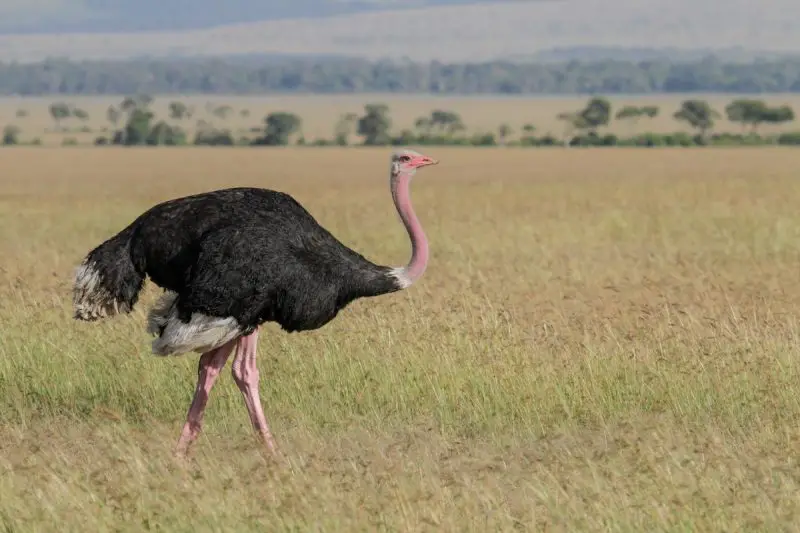
The Common Ostrich is more than just the biggest bird alive—it’s a living icon of the African wilderness. Standing up to 9 feet tall and tipping the scales at over 140 kilograms, this giant commands the open plains with power and grace. Built for speed and defense, it can sprint up to 43 miles per hour, delivering powerful kicks that can maim or even kill predators.
Males become even more impressive during the breeding season, flaunting vivid black-and-white plumage and engaging in striking courtship displays that include wing-flapping, booming vocalizations, and deep bows.
This species includes four recognized subspecies: the North African, Somali, Masai, and Southern Ostrich. Each has adapted to its unique habitat—from the arid edges of the Sahara to the fertile grasslands of southern Africa—differing slightly in size, coloration, and range. Together, they represent a successful and highly adaptable lineage still thriving across the continent.
2. Somali Ostrich (Struthio molybdophanes)
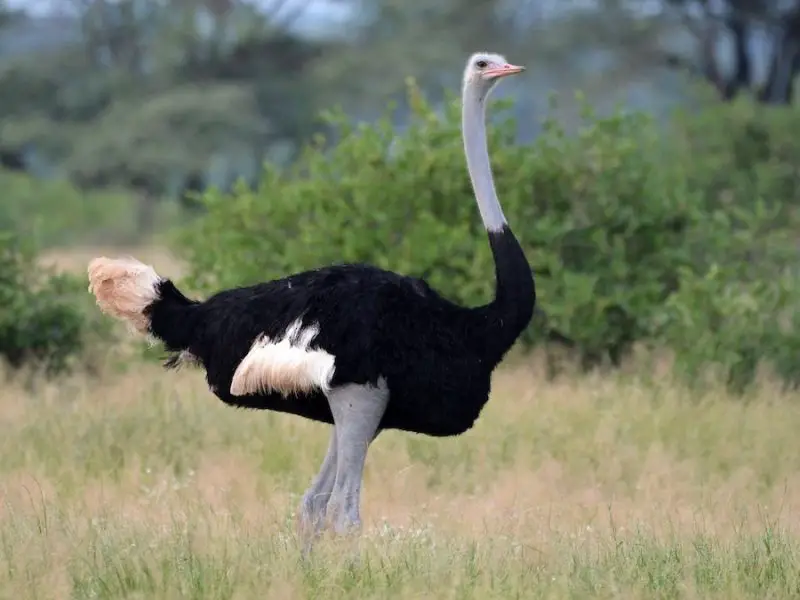
A dazzling relative of the Common Ostrich, the Somali Ostrich roams the rugged landscapes of the Horn of Africa—from the arid brushlands of Somalia and Ethiopia to the acacia scrub of northern Kenya. What sets this bird apart is not just its isolated range, but its striking appearance. Males boast bright cobalt-blue skin on their necks and legs, which deepens in color during breeding season—turning them into walking displays of avian flair.
Unlike its more widespread cousin, the Somali Ostrich prefers dense shrublands to open savannas, weaving through thorny thickets in search of seeds, grasses, and insects. This reclusive behavior may be part of why it remained unrecognized as a separate species for so long. But genetic research now confirms that S. molybdophanes is not only morphologically distinct—it also represents a unique evolutionary path within the ostrich lineage.
In a region challenged by climate change and political instability, the Somali Ostrich stands as a resilient survivor. Its rarity and genetic uniqueness make it a conservation priority, as well as a vivid emblem of biodiversity in East Africa’s lesser-known wild places.
Extinct Species
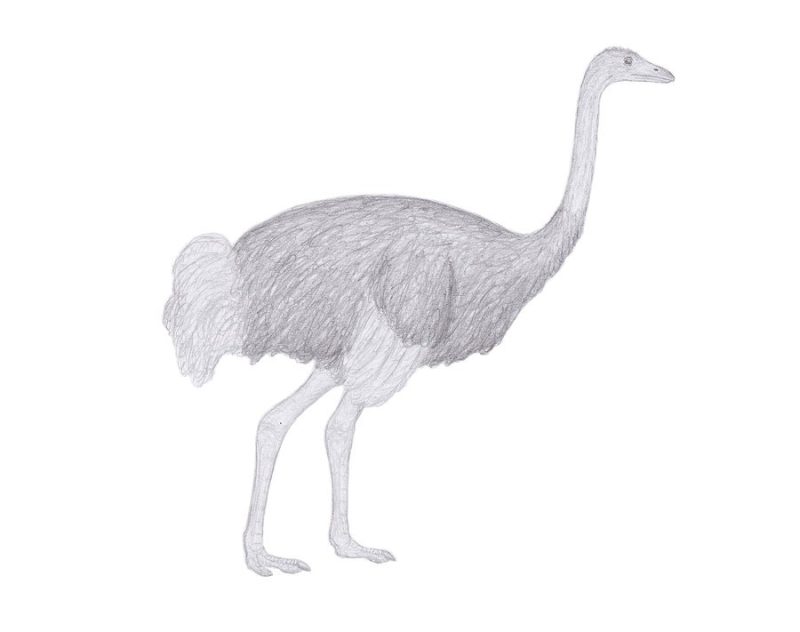
3. Asian Ostrich (Struthio asiaticus)
Roaming across India, Iran, and Central Asia during the Pleistocene epoch, the Asian Ostrich was one of the most geographically widespread extinct ostrich species. Although it resembled the modern Common Ostrich in many ways, fossil evidence suggests it may have had more robust features and different limb proportions. These birds thrived in open steppe and semi-desert habitats until climate shifts and increasing human presence likely led to their extinction. Remarkably, fossilized eggshells from this species have even been found at prehistoric human sites, revealing a long-standing connection between early humans and ostriches.
4. Struthio chersonensis
Once stalking the open plains of Eastern Europe, particularly in what is now Ukraine, S. chersonensis was a formidable Pliocene-era giant. As one of the best-documented extinct ostriches in Europe, it provides critical insights into the ancient spread of the Struthio genus beyond Africa and Asia. Fossils show a bird built for strength, with long legs and a body built for traversing expansive grasslands. Its presence in Europe during this epoch underscores just how far ostriches once ranged when global climates were warmer.
5. Struthio brachydactylus
Named for its distinctively short toes, this Miocene-era ostrich inhabited southern Russia and Central Asia, adapting to the sprawling steppe environments of the time. Slightly smaller than its modern relatives, S. brachydactylus likely lived a similar lifestyle—running across dry open country, grazing on vegetation, and evading predators with bursts of speed. Its abbreviated digits suggest subtle evolutionary experiments within the Struthio lineage, possibly an adaptation for more efficient locomotion on uneven terrain.
6. Struthio oldawayi
Discovered in the iconic Olduvai Gorge of Tanzania, S. oldawayi is a key species in tracing ostrich evolution. Dating back to the early Pleistocene, this large flightless bird shared its habitat with early hominins, potentially serving as both prey and ecological rival. Adapted to life on the open savanna, it had powerful legs and a large frame, echoing the traits of modern ostriches. Many paleontologists consider S. oldawayi a probable ancestor of today’s Common Ostrich, linking past and present through fossilized bone.
7. Struthio kakesiensis
Also from Tanzania, S. kakesiensis is a smaller, more elusive relative that lived around 3.5 million years ago. Known from fragmentary fossils—mostly leg bones—it nonetheless adds important depth to the story of African ostrich diversity. Its more compact size may have allowed it to thrive in environments where larger ostriches would struggle, indicating niche partitioning among prehistoric flightless birds.
8. Struthio coppensi
Stepping even further back in time, S. coppensi lived during the Miocene epoch, over 6 million years ago. Discovered in Kenya, this small-bodied ostrich is among the earliest known representatives of the genus. Its presence in ancient East African strata supports the theory that ostriches originated on the African continent before expanding into Europe and Asia. Though smaller in stature, it played a big role in the evolutionary tale of these birds.
9. Struthio daberasensis
Unearthed in the fossil-rich terrains of Namibia, S. daberasensis lived around 1.5 million years ago during a time of ecological flux. With characteristics reminiscent of both ancestral and modern ostriches, it likely overlapped temporally with early Homo species. This coexistence provides intriguing clues into the interactions between large birds and early humans in the shifting environments of the Pleistocene—possibly as prey, competitor, or scavenged resource.
10. Struthio wimani
The farthest-flung of all ostrich species, S. wimani hails from prehistoric China. Its discovery extends the ancient range of ostriches deep into East Asia, underscoring just how adaptable these birds were during past geological epochs. Though little is known beyond its skeletal remains, its very existence challenges assumptions about ostrich biogeography and confirms that the genus once stretched far beyond the arid plains of Africa.
Conclusion
From the scorching savannas of modern-day Africa to the fossil beds of Asia and Europe, ostriches have a long and storied evolutionary history. Today, only two species remain, but the fossil record reveals a diverse and dynamic group that once roamed across vast continents. Studying these species, both extinct and extant, helps scientists better understand how climate, geography, and human activity have shaped the survival of one of the world’s most iconic flightless birds.

